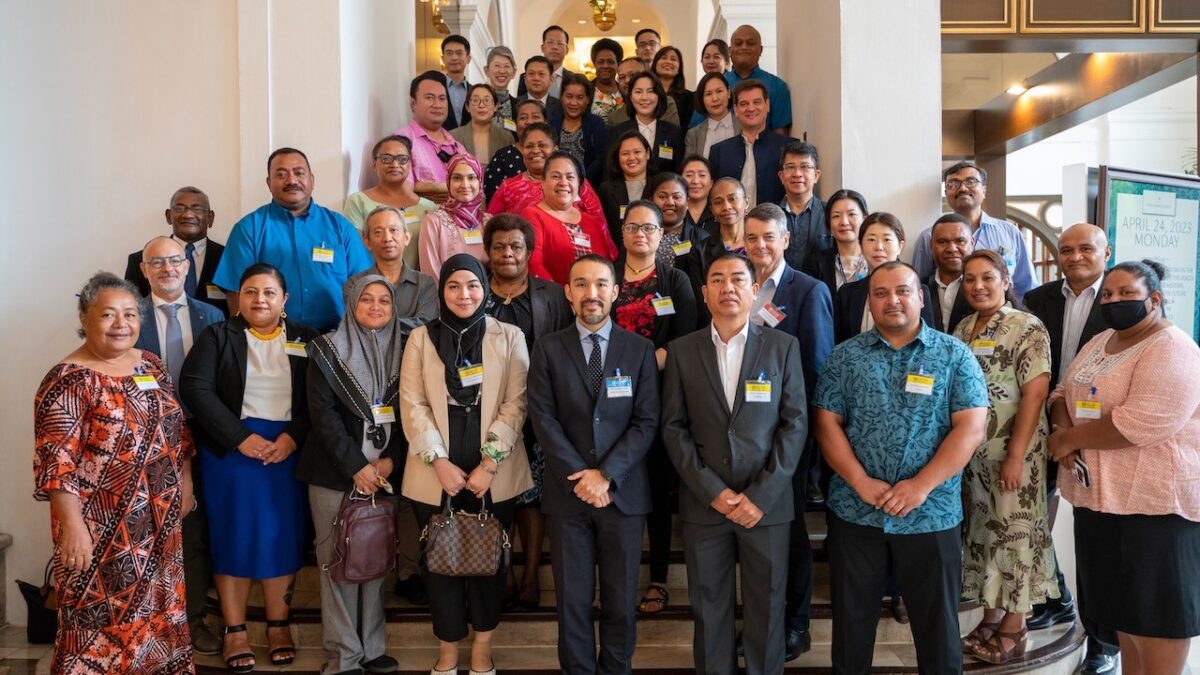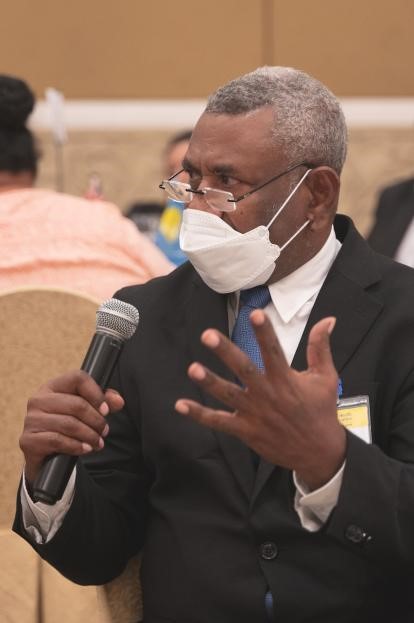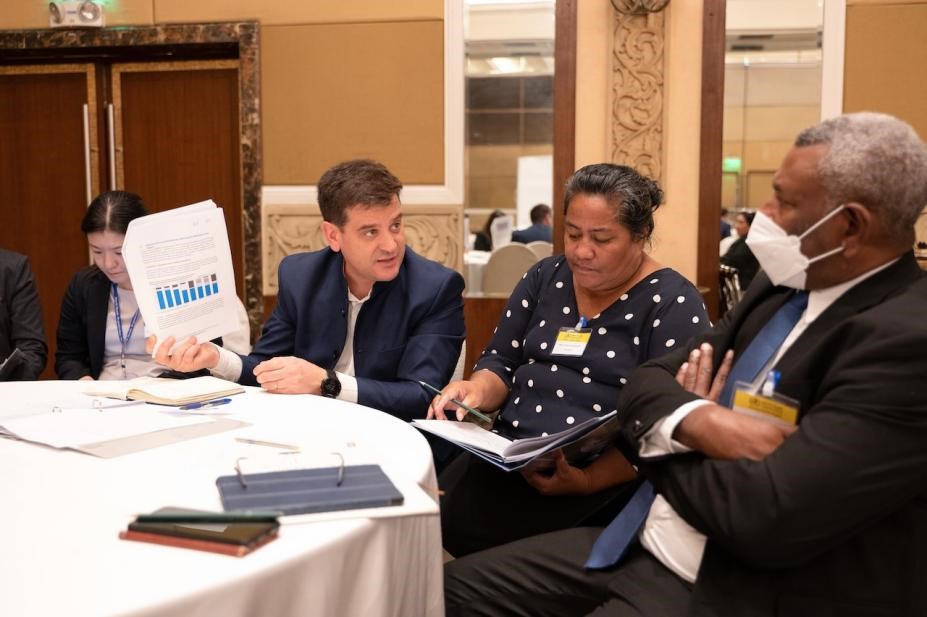

Participants and facilitators of the member states consultation on the draft framework to shape the health workforce of the Western Pacific Region for the future
Shaping a health workforce for the future of the Western Pacific Region

Mr Larui stressing the importance of outreach services in Primary Health Care

Discussions with Representative of the European region and Deputy health secretary for Tuvalu
Consultation on the draft framework to shape a health workforce for the future of the Western Pacific region was successfully held recently in Manila, Philippines.
Solomon Islands is a member state of the World Health Organization, Western Pacific Region and was represented at the consultation by Mr. Michael Larui, the Solomon Islands National Director of Nursing, Ministry of Health and Medical Services.
The objectives of the consultations were to obtain inputs and recommendation for improvement from Member States on the draft framework for strengthening the Health Workforce in the Western Pacific Region and to build consensus on the Strategic Directions and main elements of the draft regional framework among member states in the region.
The framework highlighted that there can be no health systems without a health workforce.
A motivated and competent health workforce with the right number, in the right places, and with the right skill-mix, is central to providing person-centered integrated care and achieving our ambitious “triple billion “targets – one billion more people benefit from universal health coverage; one billion more people are better protected from health emergencies, and one billion more people are enjoying better health and wellbeing.
The framework aims to present an ambitious yet achievable vision of the future health workforce in the region. To achieve that goal, the framework will, identify changes needed to meet future population needs, describe the current situation of the health workforce, opportunity to analyze the bottlenecks and enablers to make that change happen and set out policy options for member states to adapt and implement within their context on the ground
In moving forward towards a stronger health workforce in the region, the framework outlined health systems considerations for member states which include health workforce reforms which involve health systems reforms and beyond health, strengthening institutional arrangements for devising and implementing national strategies for reforms in health systems and the health workforce and investing strategically in the health workforce and systems as key to shaping the profile of health workforce and systems.
The availability of up-to-date HRH data, including the private sector, is critical for countries to identify the gaps, assess them in a systems approach, and inform policy decisions.
Measuring and monitoring progress in an accountable manner is key to accelerating concerted efforts. Member states are encouraged to continue to monitor progress and report through the global mechanism.
In alignment to the National Health Strategic Plan 2022-2031, the Health workforce strategy is one the key outcome area to work on given the inequitably spread and distribution of its health workforce and workforce attrition.
-MHMS Press